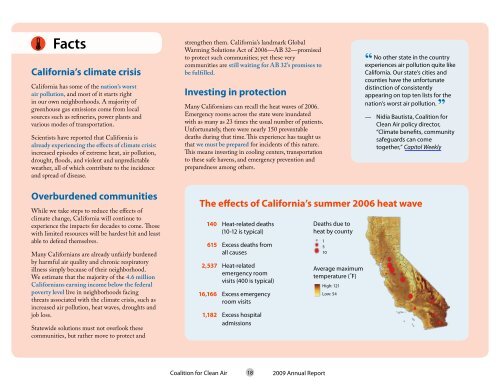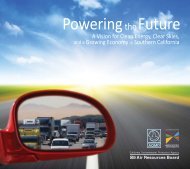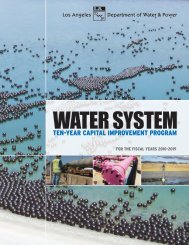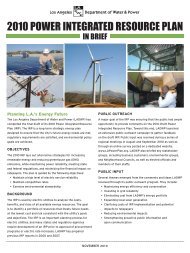The Road To Clean aiR - LA Differentiated
The Road To Clean aiR - LA Differentiated
The Road To Clean aiR - LA Differentiated
You also want an ePaper? Increase the reach of your titles
YUMPU automatically turns print PDFs into web optimized ePapers that Google loves.
j<br />
<br />
N<br />
Facts<br />
c ><br />
California’s climate crisis<br />
California has some of the nation’s worst<br />
air pollution, and most of it starts right<br />
in our own neighborhoods. A majority of<br />
greenhouse gas emissions come from local<br />
sources such as refineries, power plants and<br />
various modes of transportation.<br />
Scientists have reported that California is<br />
already experiencing the effects of climate crisis:<br />
increased episodes of extreme heat, air pollution,<br />
drought, floods, and violent and unpredictable<br />
weather, all of which contribute to the incidence<br />
and spread of disease.<br />
strengthen them. California’s landmark Global<br />
Warming Solutions Act of 2006—AB 32—promised<br />
to protect such communities; yet these very<br />
communities are still waiting for AB 32’s promises to<br />
be fulfilled.<br />
Investing in protection<br />
Many Californians can recall the heat waves of 2006.<br />
Emergency rooms across the state were inundated<br />
with as many as 23 times the usual number of patients.<br />
Unfortunately, there were nearly 150 preventable<br />
deaths during that time. This experience has taught us<br />
that we must be prepared for incidents of this nature.<br />
This means investing in cooling centers, transportation<br />
to these safe havens, and emergency prevention and<br />
preparedness among others.<br />
“<br />
No other state in the country<br />
experiences air pollution quite like<br />
California. Our state’s cities and<br />
counties have the unfortunate<br />
distinction of consistently<br />
appearing on top ten lists for the<br />
nation’s worst air pollution. ”<br />
—<br />
Nidia Bautista, Coalition for<br />
<strong>Clean</strong> Air policy director,<br />
“Climate benefits, community<br />
safeguards can come<br />
together,” Capitol Weekly<br />
Overburdened communities<br />
While we take steps to reduce the effects of<br />
climate change, California will continue to<br />
experience the impacts for decades to come. Those<br />
with limited resources will be hardest hit and least<br />
able to defend themselves.<br />
Many Californians are already unfairly burdened<br />
by harmful air quality and chronic respiratory<br />
illness simply because of their neighborhood.<br />
We estimate that the majority of the 4.6 million<br />
Californians earning income below the federal<br />
poverty level live in neighborhoods facing<br />
threats associated with the climate crisis, such as<br />
increased air pollution, heat waves, droughts and<br />
job loss.<br />
Statewide solutions must not overlook these<br />
communities, but rather move to protect and<br />
<strong>The</strong> effects of California’s summer 2006 heat wave<br />
140<br />
615<br />
2,537<br />
16,166<br />
1,182<br />
Heat-related deaths<br />
(10-12 is typical)<br />
Excess deaths from<br />
all causes<br />
Heat-related<br />
emergency room<br />
visits (400 is typical)<br />
Excess emergency<br />
room visits<br />
Excess hospital<br />
admissions<br />
Deaths due to<br />
heat by county<br />
1<br />
5<br />
10<br />
Average maximum<br />
temperature (˚F)<br />
High: 121<br />
Low: 54<br />
Coalition for <strong>Clean</strong> Air<br />
18<br />
2009 Annual Report





